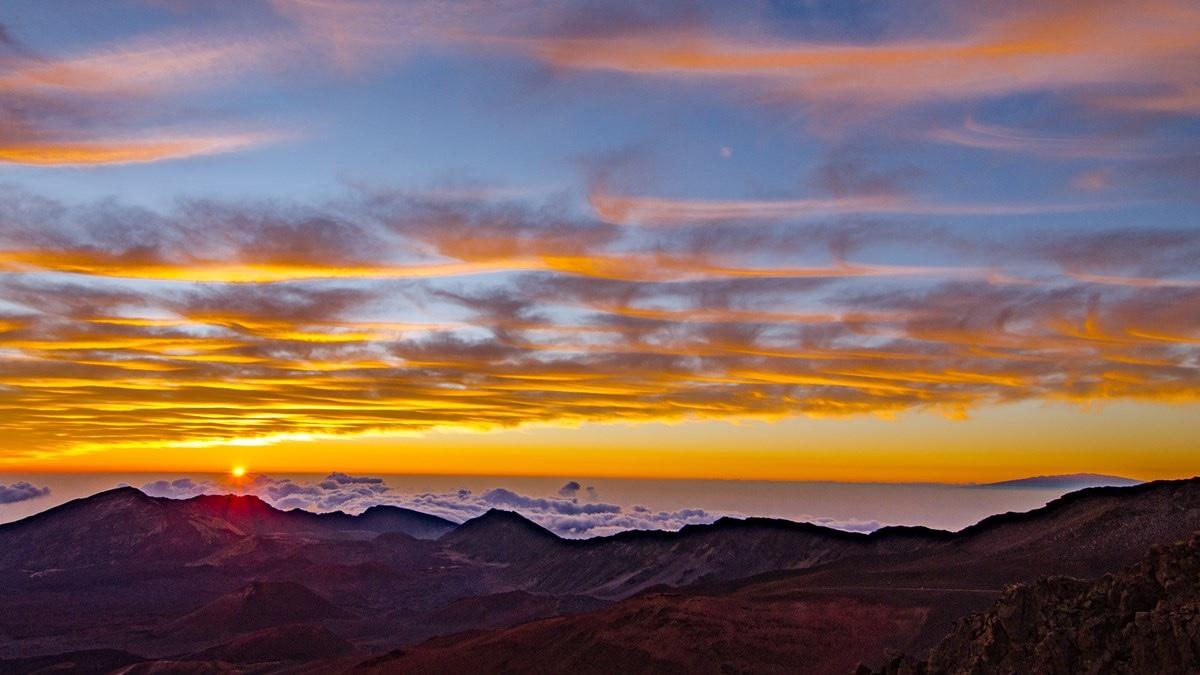
The number of air tours allowed over Haleakalā National Park is being cut by more than half/NPS file
The air tour management plan approved for Haleakalā National Park in Hawai'i calls for a more than 50 percent reduction in overflights, to 2,224 per year.
The plan provides for the continuation of air tours at reduced levels over the park and within a half-mile of its boundary to protect natural and cultural resources, wilderness, the integrity of Native Hawaiian sacred sites and ceremonial areas, and visitor experiences, the park said in a news release.
Specifically, the plan:
Authorizes up to 2,224 air tours per year, a 54 percent reduction from the existing average of 4,824 flights per year.
Limits times that the air tours can occur to between 11 a.m. and 2 p.m. local time on Mondays, Tuesdays, Thursdays, Fridays, and Saturdays. Qualifying air tours using quiet technology may fly from 11 a.m. to 4 p.m. on those days.
Limits air tours to a single one-way route from west to east over the southern area of the park. The route avoids Haleakalā Crater, where sound levels are among the lowest recorded in any national park, and protects key cultural and natural resources, visitor use areas, and park wilderness.
Establishes minimum altitudes of 2,000 feet above ground level over land and 3,000 feet above ground level over the ocean. Vertical separation (“stacking”) of aircraft along the route is prohibited.
Sets a quarter-mile buffer on either side of the route as the acceptable range of deviation that does not trigger enforcement action.
Identifies no-fly days to include:
Sundays and Wednesdays
Six commercial-free days that follow the Hawaiian Moon Calendar and Makahiki Season, and which vary from year to year:
End of Makahiki (typically in January)
Zenith Noon (typically in May)
Summer Solstice (June)
Zenith Noon (typically in July)
Start of Makahiki (typically in October)
Winter Solstice (December)
Two culturally significant Hawaiʻi state holidays determined through consultation.
Prince Jonah Kūhiō Kalanianaʻole Day (March 26)
King Kamehameha I Day (June 11)
Six additional no-fly days of important cultural significance to Native Hawaiians
Sets a January 1, 2033, deadline after which all commercial air tours must use quiet technology aircraft.
The air tour management plan was developed in cooperation with stakeholders representing a variety of interests, including Native Hawaiian organizations, other land-management agencies, local communities, and recreation groups. The plan addresses and responds to concerns identified during these consultations and through public comment.
The final air tour management plan is available at the Planning, Environment & Public Comment (PEPC) website here. You can visit NPS Air Tours and FAA’s Air Tour Management Plan site for more information about air tour management plans.


